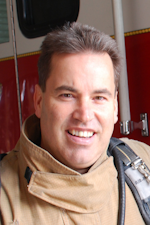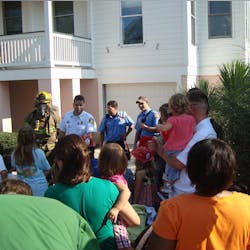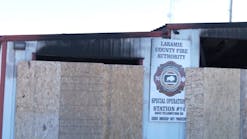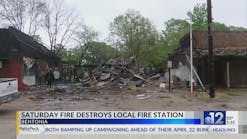Fire Prevention: The Strategic War for Resilient Communities
I continue to advocate that today’s fire service members transition their mindset from the kindly community civil servants who respond to individual (and random) neighborhood misfortunes to that of front-line troops in this new world, where battlefield lines are drawn down every community street and across every doorstep in America. With any event to which a fire department responds, the department’s ability to control and mitigate that event not only directly correlates to the security and resiliency of a community, but also their citizens’ perception of it. If citizens feel insecure, then the community is unsecure, and unsteadiness sets in and chaos reigns.
Military mindset
The fire service is a paramilitary organization, and its high time we begin to view ourselves as such, not only in our rank structure, but also in our operations and deployment. Engine and ladder companies become front-line troops, and rescue and hazmat companies become special forces. Our common enemies are the elemental risks that drain resources and supportive budgets. Along with those tangible erosions is the intangible sense of security and confidence by the citizens, and just as when the soil erodes beneath a building, the fundamental foundations that prop up our way of life begins to crack. Think about the state of a community’s health if events are not quickly mitigated, with a sense of normalcy quickly restored.
This approach is a very close cousin to the “broken windows” criminological theory of 1982 that posited that broken windows are visible sign of the community’s criminal health: The more broken windows a community has, the more a community feels disorder, which causes increased withdrawal and fear from citizens. Our ability to respond and handle emergencies (repair those windows as soon as they are cracked) is crucial to a community’s wellbeing, health and growth.
We can do better
If we equate our mission with homeland security, then, just as in military defense, our ability to be victorious on battlefields is directly tied to budgets and resources. You need the resources and troops to do battle, and like military defense, you need public support to obtain those troops and resources. To win that public support, you must have a perceivable threat that the public sees and fears, and you must also have the trust of the people to use the money and deploy the troops wisely.
Choosing to fight a battle that the public does not support, and/or visual images of troops and damaged equipment piled up on battlefields, will quickly erode that public’s support. Winning any battle is more than bravado and charging ahead full steam into the breach at the first sign of trouble; it involves smart, careful and thoughtful strategic planning and communication. Thus, without information and intelligence, and without long-term, proven public trust gained through continuous communication, your ability to accomplish any of this is crippled. You lose the battles. You lose troops unnecessarily. Your losses begin to exceed your resources. You lose the public’s trust and support. You lose the war. Broken windows and chaos reigns. Foundations crack.
In order to deploy victorious troops with a solid strategic battle plan, you need elite specialized reconnaissance and intelligence troops. In fire service terms, those are your community risk reduction (CRR) personal. Their mission is to provide the front-line troops the information on enemy locations and strength in order to strategically gain the resources needed to surgically apply them for maximum victory with minimum losses. Their mission is also to educate and communicate with the public, making them aware of the enemy, and rallying them to not only support the troops, but also become an underground resistance in defending their own homes. Equally important, as history as taught us, the winning of hearts and minds is crucial to victory, and CRR personnel are the ones who control the narrative and propaganda.
Sample battleplan
Let’s say the run data indicates that the enemy advancing on a community is opioid overdoses in a particular neighborhood. CRR personnel provide commanders with an advanced, in-depth analysis of the data and information, thus providing them justification to gather resources and take appropriate actions, such as adjusting staffing and resources to focus on the vulnerable community, increasing supplies of Narcan and airway devices, and ensuring troops have the protections, weapons and reinforcements to safely and effectively place “bombs on target.”
The rapport, trust and knowledge of CRR personnel, gained through continuously working with the community, assists commanders in liaising and communication with ally agencies, such as emergency room staff, local social services, faith-based agencies, and pharmacies, all of whom have a role in any success. Their connections and relationships with respected teachers, coaches and community leaders can be brought into the fight to turn the populace against the enemy and in support of the fire department’s efforts, as well as help educate the public on how to protect themselves and their families.
CRR personnel’s knowledge and relationship with the local media can keep the public informed about the enemy, the risk it poses to every home in the community, the battle being waged by the troops, and what is needed to win the battle. The trust CRR personnel have with the public, combined with media relationships, is key to creating a coalition of informed and supportive citizens to battle the opioid enemy as a community.
Involvement from everyone
All too often in the fire service those working in prevention, and now CRR, are seen as outsiders to the main operations of the fire department, creating an “us vs. them” mentality. This is counterproductive to the seriousness of our “Everyone Goes Home” mantra. A departmental structure built as such breaks down the communication, cohesion and cooperation needed to successfully win the battles on the streets and bring the troops home. Battles have turned and wars won by the actions of a single troop or one single piece of gathered intelligence. To win our war, all troops need to be engaged, because without proper intelligence and community support, you are fighting blindly and with a very high cost.
The fire department is vital to keeping its community safe and providing it with a sense of stability and security. It fights often-unseen battles daily while protecting unsuspecting citizens who go about their daily routines blissfully unaware of how close their community came from being conquered. Today these battles are growing beyond our resources and ability to quickly mitigate them. In essence, we are fighting a war of broken windows, going from battle to battle, repairing those windows as quickly as we can. But how long can our front-line forces keep that up before broken windows start occurring faster than our ability to respond to them?
CRR personnel being involved in the battle plan is crucial to the war’s success. Not only do they provide departments with information and data on broken windows to justify the fight, they engage the whole community. This engagement is not only through educating people on how to protect their own windows, but through established community relationships and trusted partnerships built over time. CRR personnel rally the entire community in the fight against a now defined and recognized common enemy. Not only can this battle now be fought from all levels and angles, but citizens are also vested in the fight with an increased sense of community, all brought to bear by the holistic approach provided by the CRR’s efforts.
In sum
Don’t just organize your fire department as a paramilitary organization in rank structure only, but in operations and force deployment as well. Community resiliency is key to national security, and the ability of a community to prevent, protect, respond, mitigate and recover from any disaster defines its resiliency.
Fire departments are currently limited to only two aspects—response and mitigation—but communities need more to be strong and secure. CRR troops are the key to delivering that and to defining your department as not only a critical community service, but also the very anchor of the community itself.

Daniel Byrne
DANIEL BYRNE is a community support officer for the Burton Fire District, Beaufort County, SC, and a retired assistant fire chief of training for the Georgia Air National Guard 165th Fire Department. A third-generation firefighter, he holds an associate degree and a bachelor’s degree in fire science as well as a master’s degree in public administration and disaster management. Byrne is an alumnus of the National Fire Academy. He received state and local awards for public relations and educational programs as well as community partnerships and served as a conference presenter and keynote speaker.






